August 9, 2024–Lubeck, Germany
- mlchad147
- Aug 9, 2024
- 4 min read
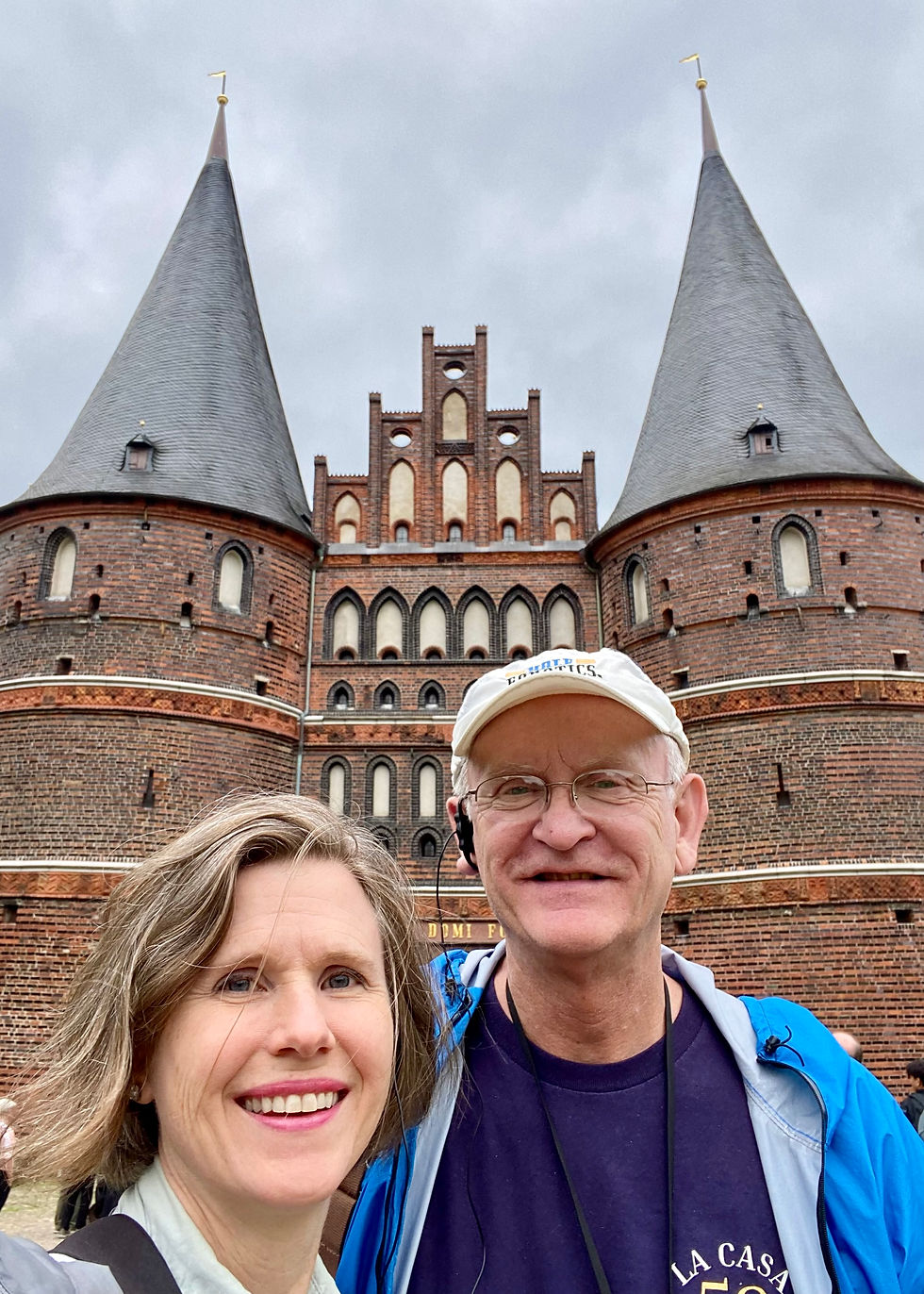
Another day, another country. Today found us back in Germany, this time docking in the Baltic port of Kiel. We actually saw Kiel once before, 31 years ago, when we transited Kaiser Wilhelm’s Kiel Canal on a much smaller ship. But like that earlier cruise, our interest wasn’t in Kiel itself. Rather, it was Lübeck we wanted to see, and Kiel was the nearest cruise port.
Lübeck, officially The Hanseatic City of Lübeck, is home to 220,000 people, and its old city on an island in the Trave River is a UNESCO World Heritage Site. We’ve focused on seeing UNESCO World Heritage Sites on this cruise and haven’t been disappointed yet. Now I wish we’d kept track of how many we’ve visited, but I think we can go back and figure that out when we get home. Lübeck’s old city is something of a rarity in Germany, because most German cities were flattened by Allied bombing during World War II and had to be rebuilt from scratch. Lübeck’s old city escaped relatively unscathed, and is a treasure for future generations to enjoy.
This won’t be a long post, because there really isn’t that much to talk about, and as I write this the hour is late. We did a nice walking tour of Lübeck, admiring its several high-spired churches, charming old buildings, and narrow, low ceilinged passageways. We didn’t have time to enter any of the churches, as the ninety minute drive from and back to Kiel ate up too much time we might have otherwise spent doing a deeper dive into the city’s sights. Hopefully my photos will convey enough of what we saw to give you a feel for old Lübeck.
The other significant thing we did was to visit the Hanseatic Museum, where we were given a detailed tour by an experienced guide. For those who might be a little rusty on their European history, the Hanseatic League was a loose confederation of merchant traders in the 12th through 15th centuries that dominated and largely controlled trade in a huge region ranging from Bergen, Norway in the north to Nuremberg, Germany in the south, and from London in the west to Novgorod, Russia in the east. Lübeck was the unofficial capital of the League, and its museum houses some amazing old documents and exhibits. What I found most interesting was that in many ways the Hanseatic League was the precursor to today’s multinational trade agreements. I really liked it, but then again I’m kind of a nerd when it comes to this stuff.
Once again we dodged the rain on a very threatening day, though it did rain heavily twice while we were in transit on the bus. I have no idea how much longer our luck can last, but I’ll enjoy it while it does. Tomorrow we’re in Copenhagen, and I can’t wait to see the Danish capital again after 31 years. Stay tuned, because I’ll be back with a full report.

First look at old Lübeck from across the Trave River. Lübeck is famous for its many high-spired churches.
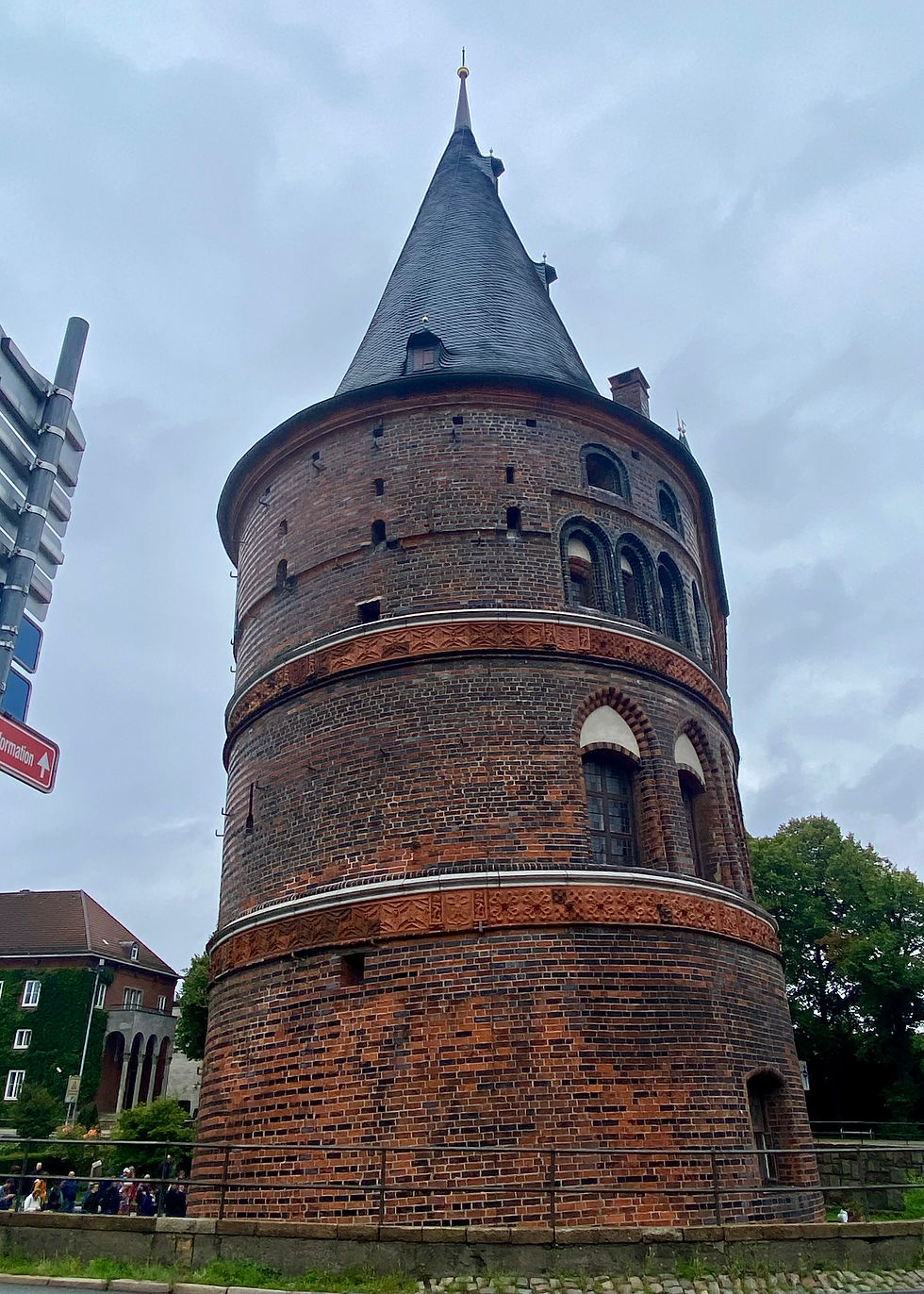
Side view of one of the two remaining city gates to old Lübeck. You’re not imagining things, either. The tower leans, due to soft soil and too much weight on one side (inside the tower). It has been stabilized and shouldn’t lean any further.
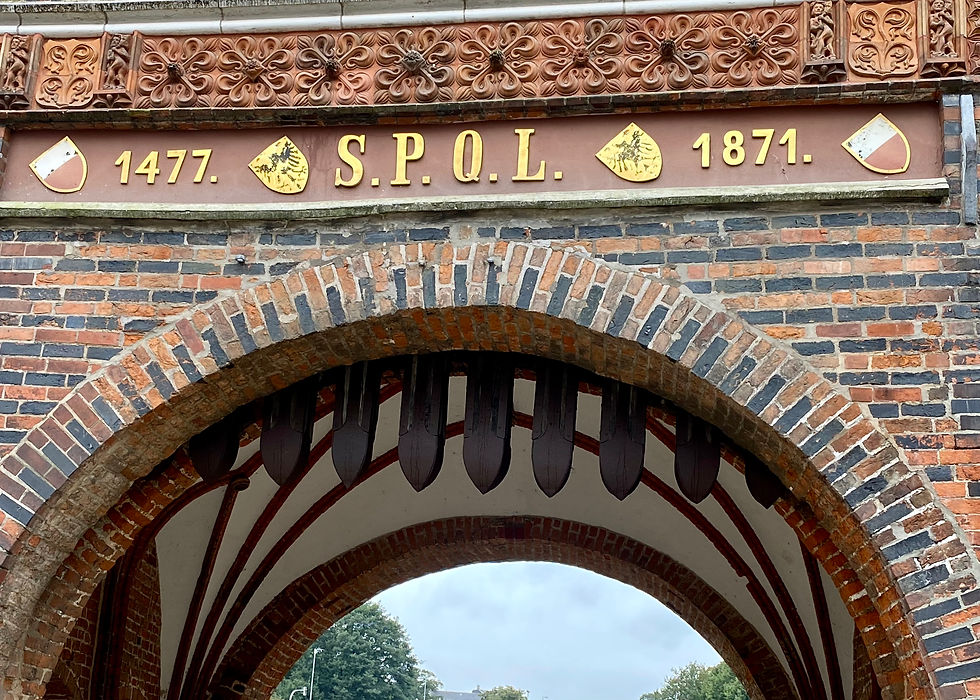
How powerful was the Hanseatic League in Lübeck? The red and white shields on the city gate is their coat of arms.
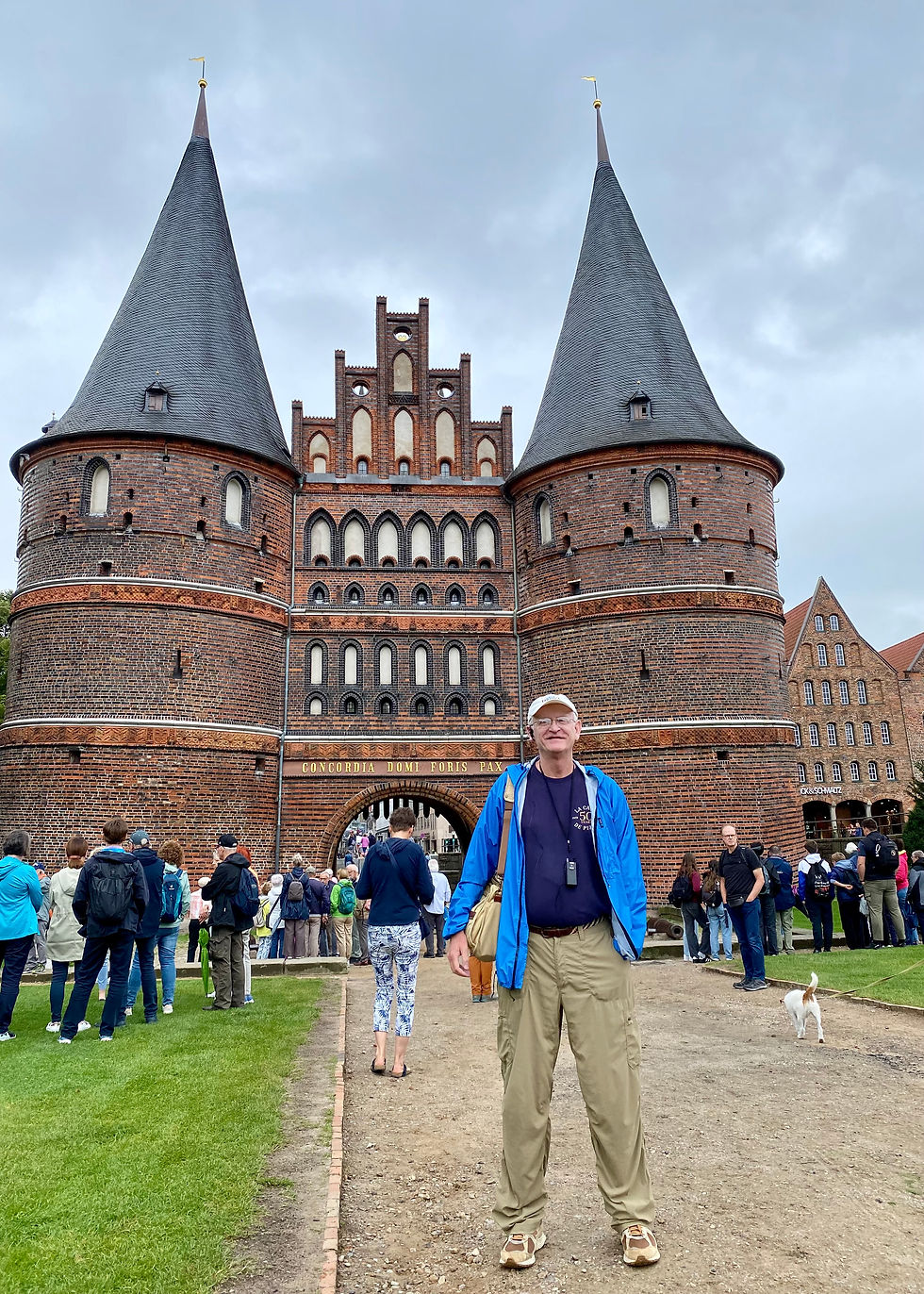
And again you’re not imagining things. The gate also sags in the middle, where the arch isn’t supported by columns.
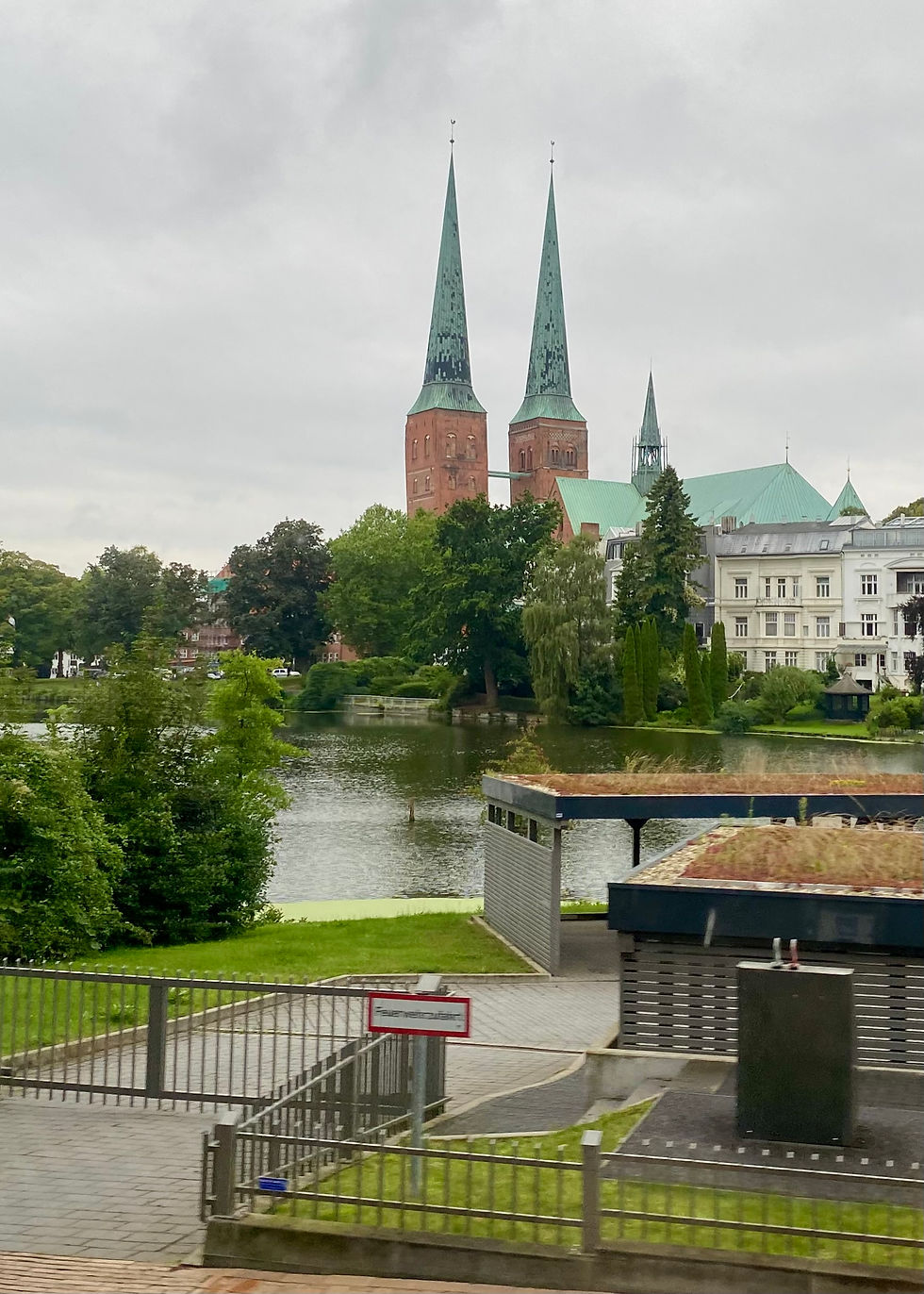
The twin spires of the Lübeck Cathedral.
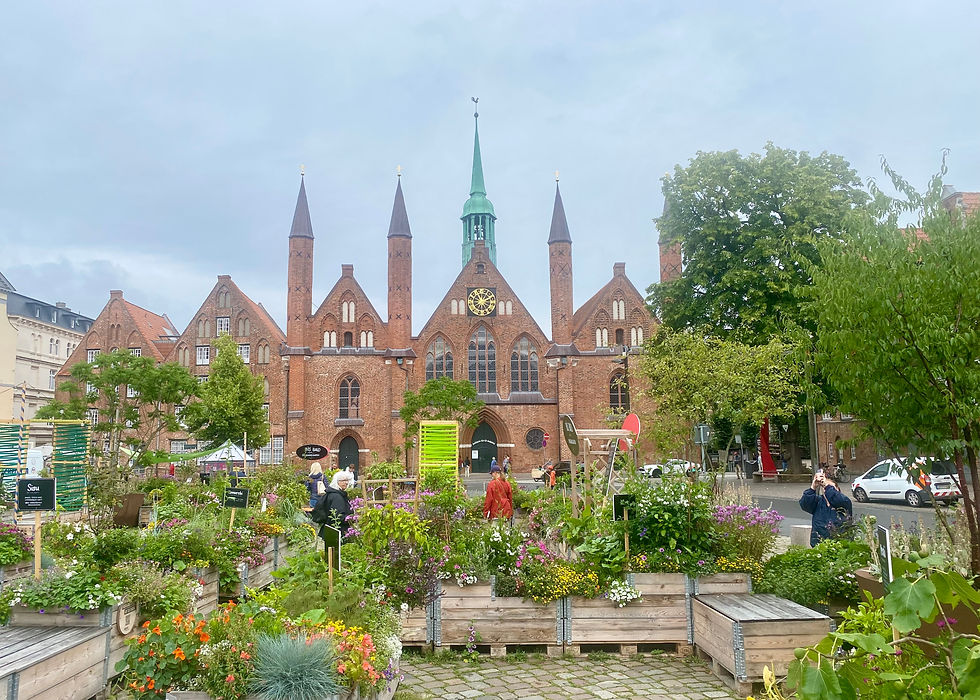
There are even modest spires on this early home for the elderly. The turquoise spire in the middle is actually a church spire behind the home.
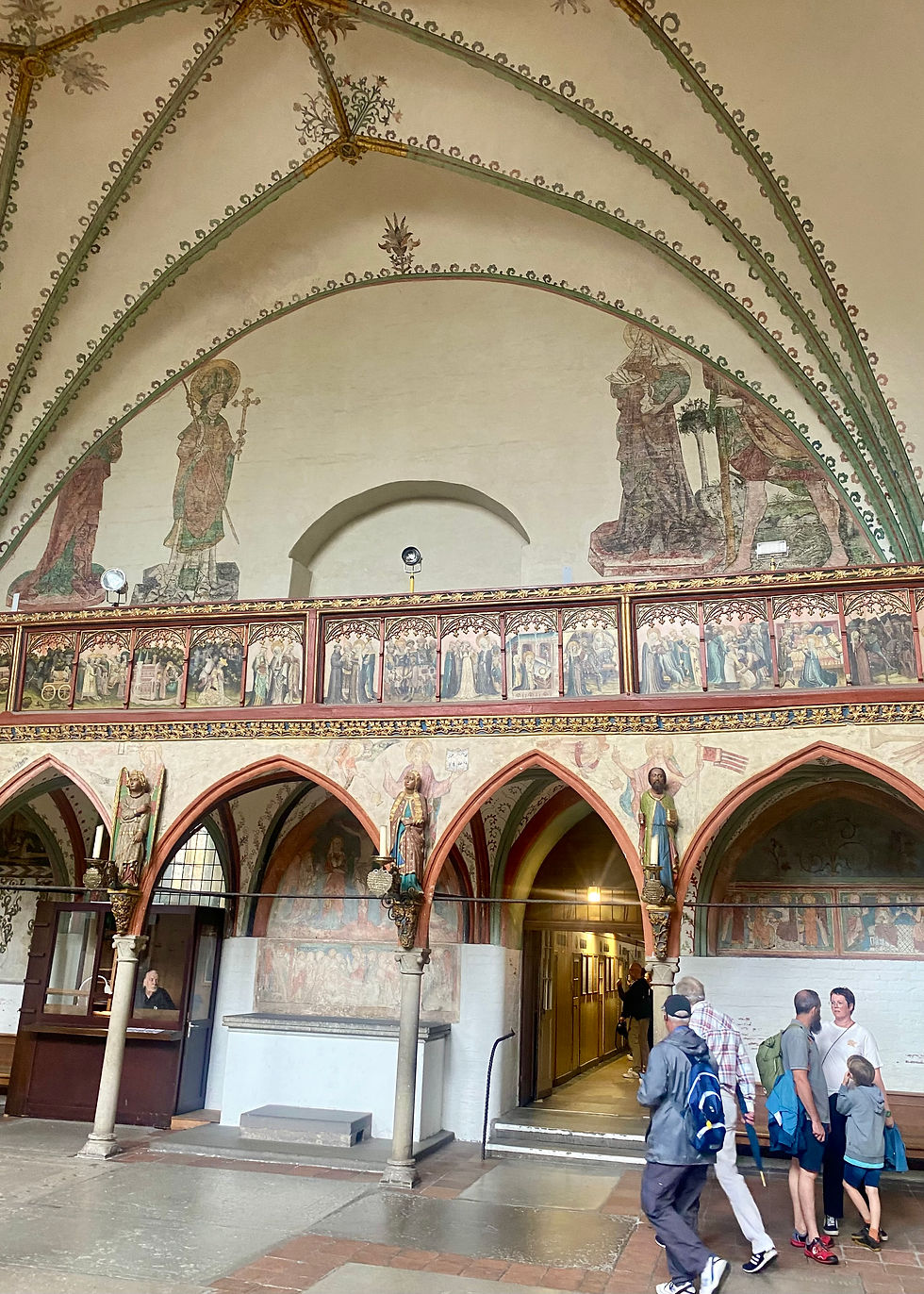
The senior citizen home also housed a church.
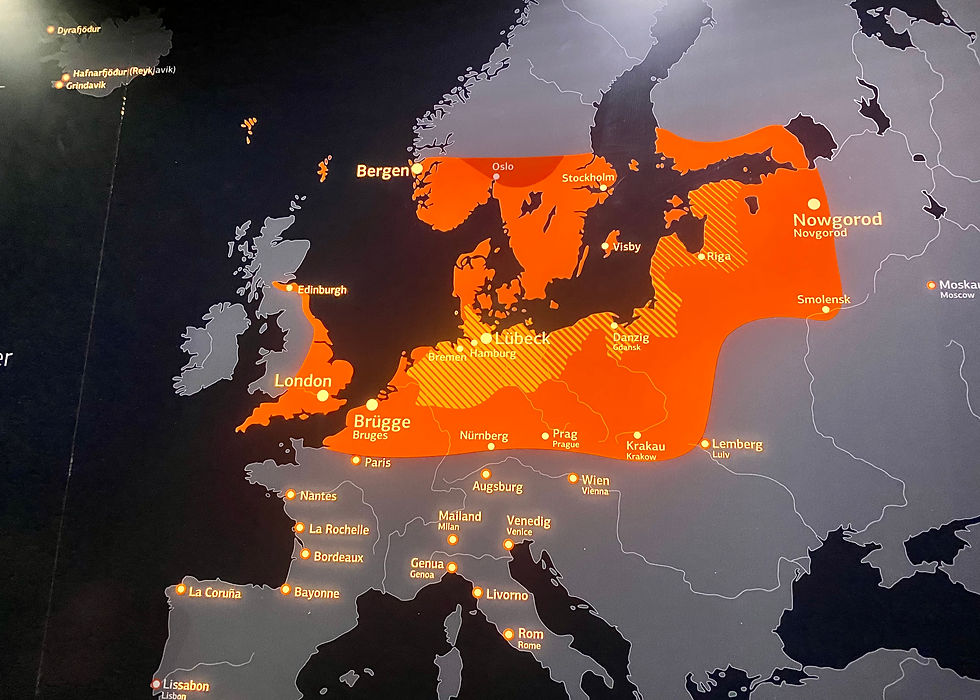
Map of the area controlled by the Hanseatic League.
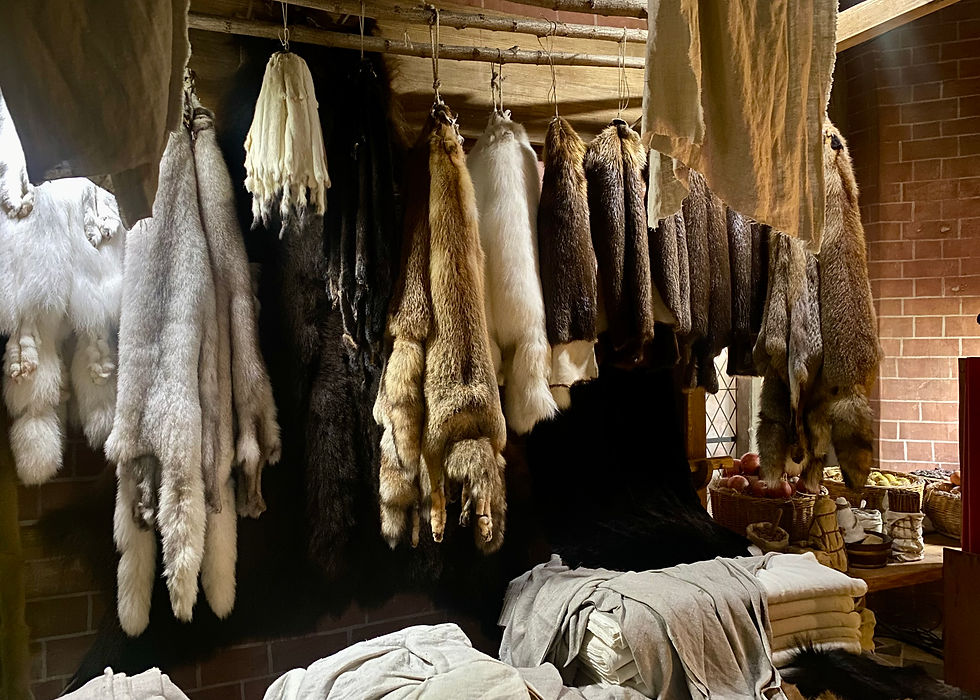
The museum has a lot of nice exhibits. This one shows the furs that would have come from Russia to be traded for goods from western Europe.
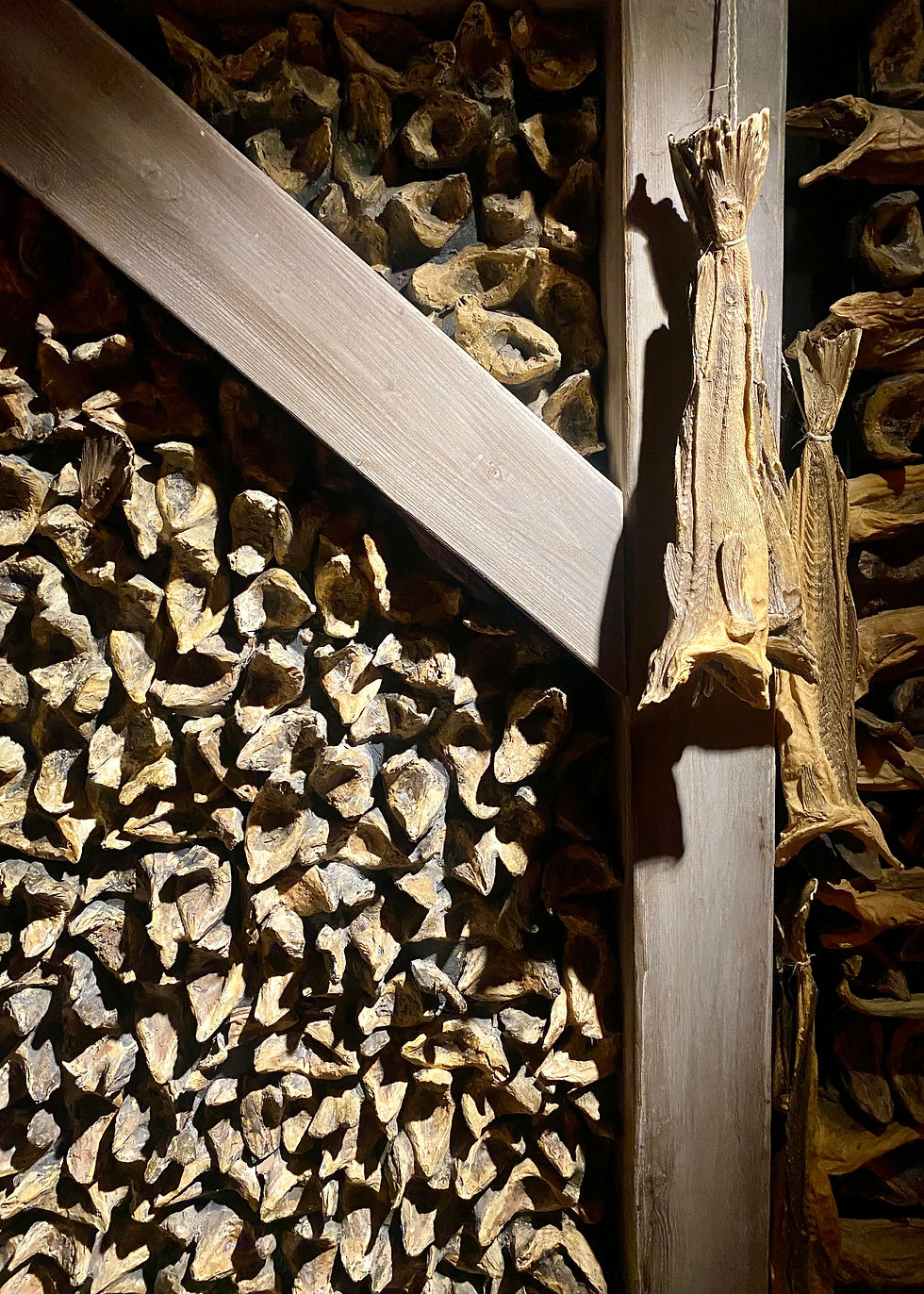
Bergen, Norway, was a power in the League for several years because of its ability to provide dried herring to the rest of the region. This is an exhibit of dried herring.
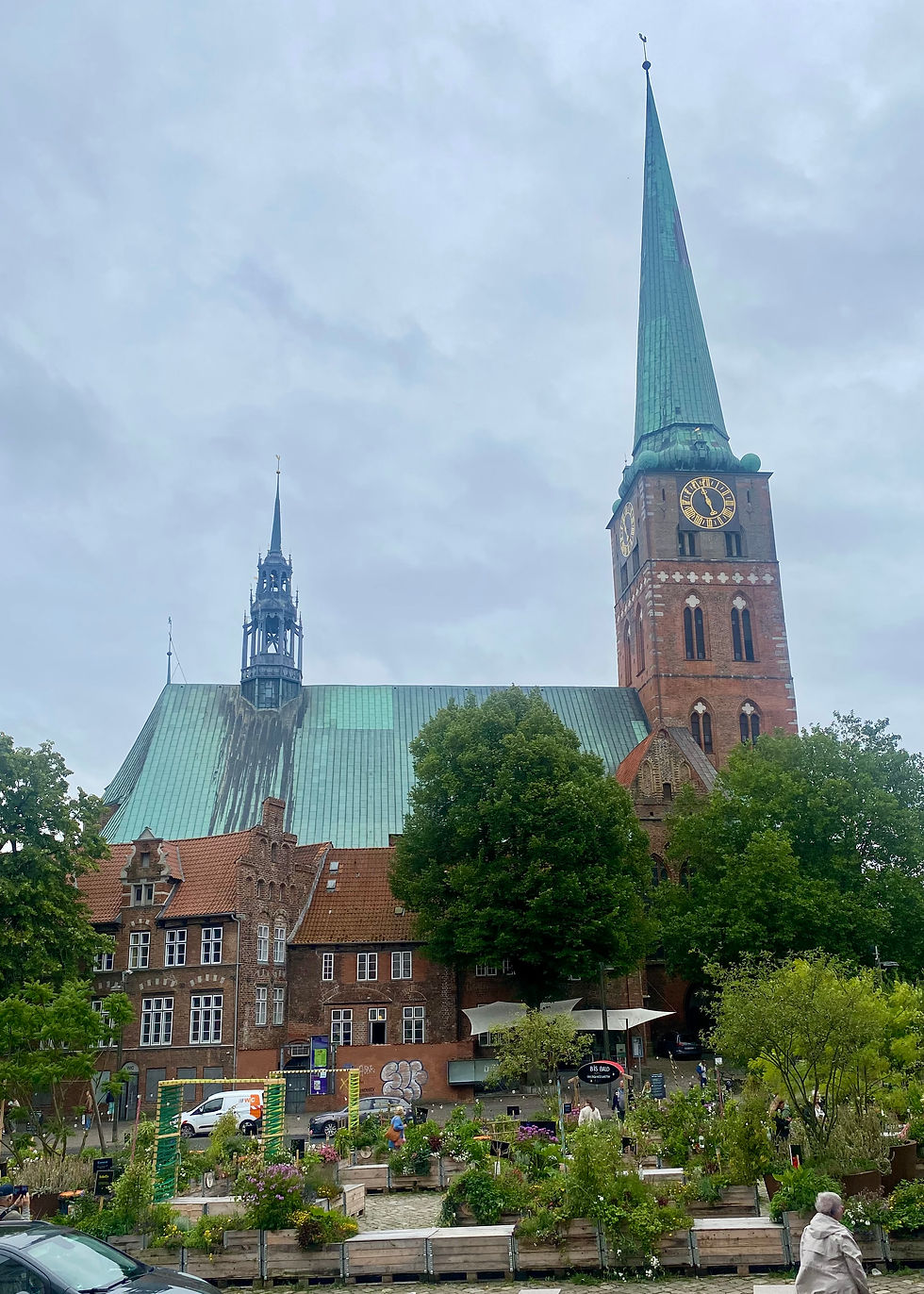
There are church spires everywhere you look in Lübeck. This one is St. Jakobi.

Believe it or not, there are still 150 working gas streetlights in old Lübeck. The city has to maintain them and continue using them to keep its status as a UNESCO World Heritage Site.
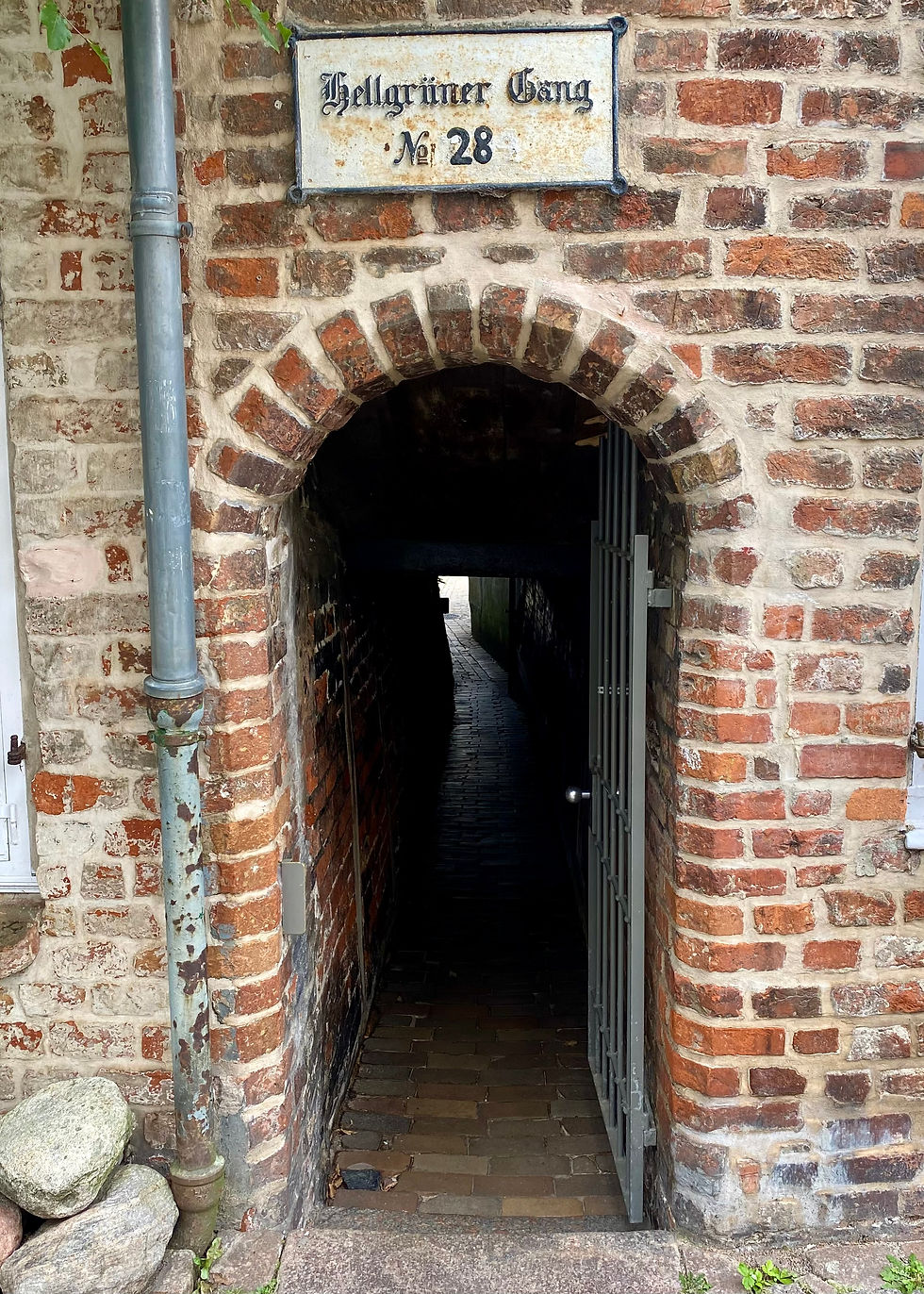
Gang is the German word for corridor or passageway. And no, using one doesn’t make you a gangster. 😂
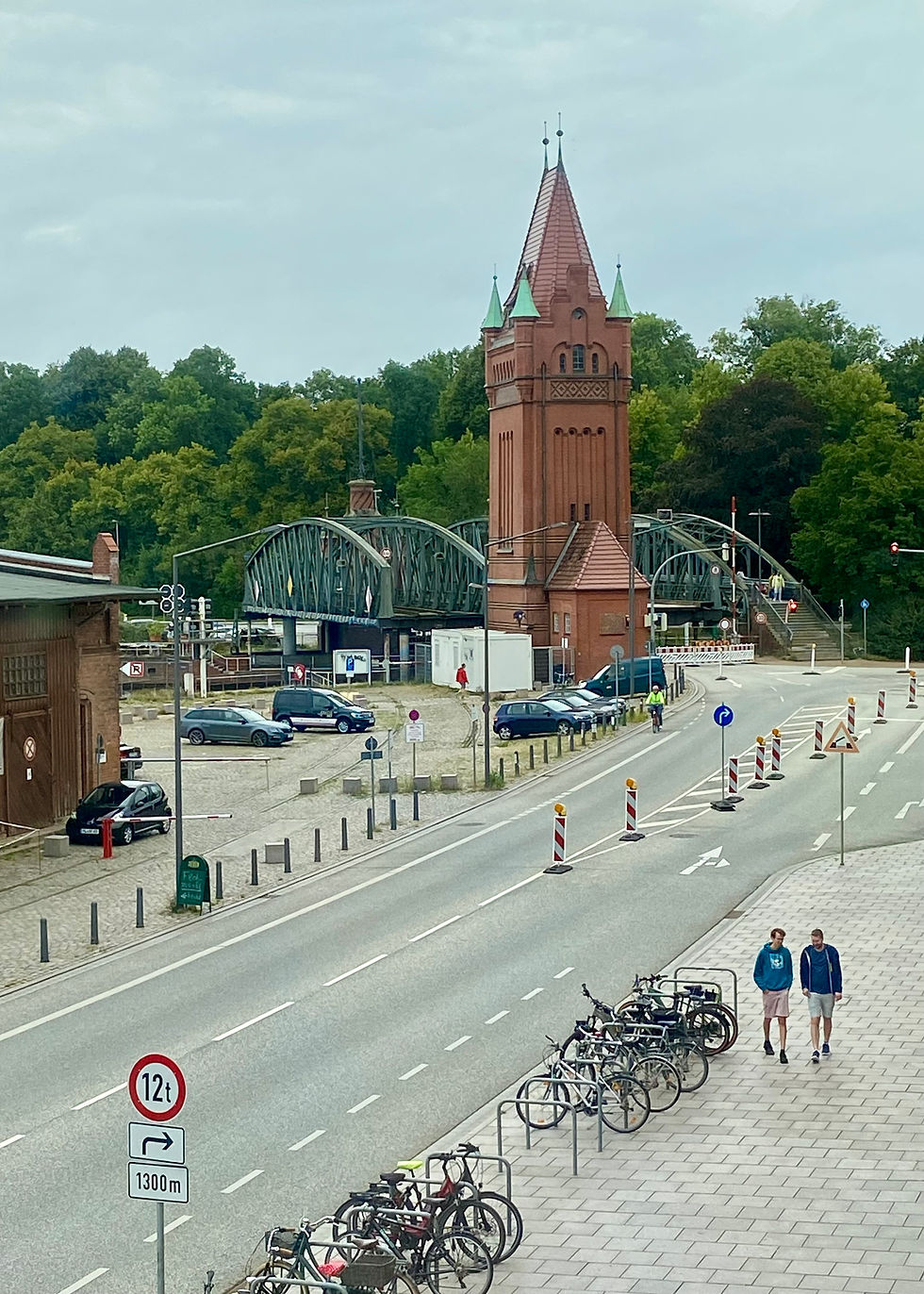
No idea what that tower was used for, but I liked it.
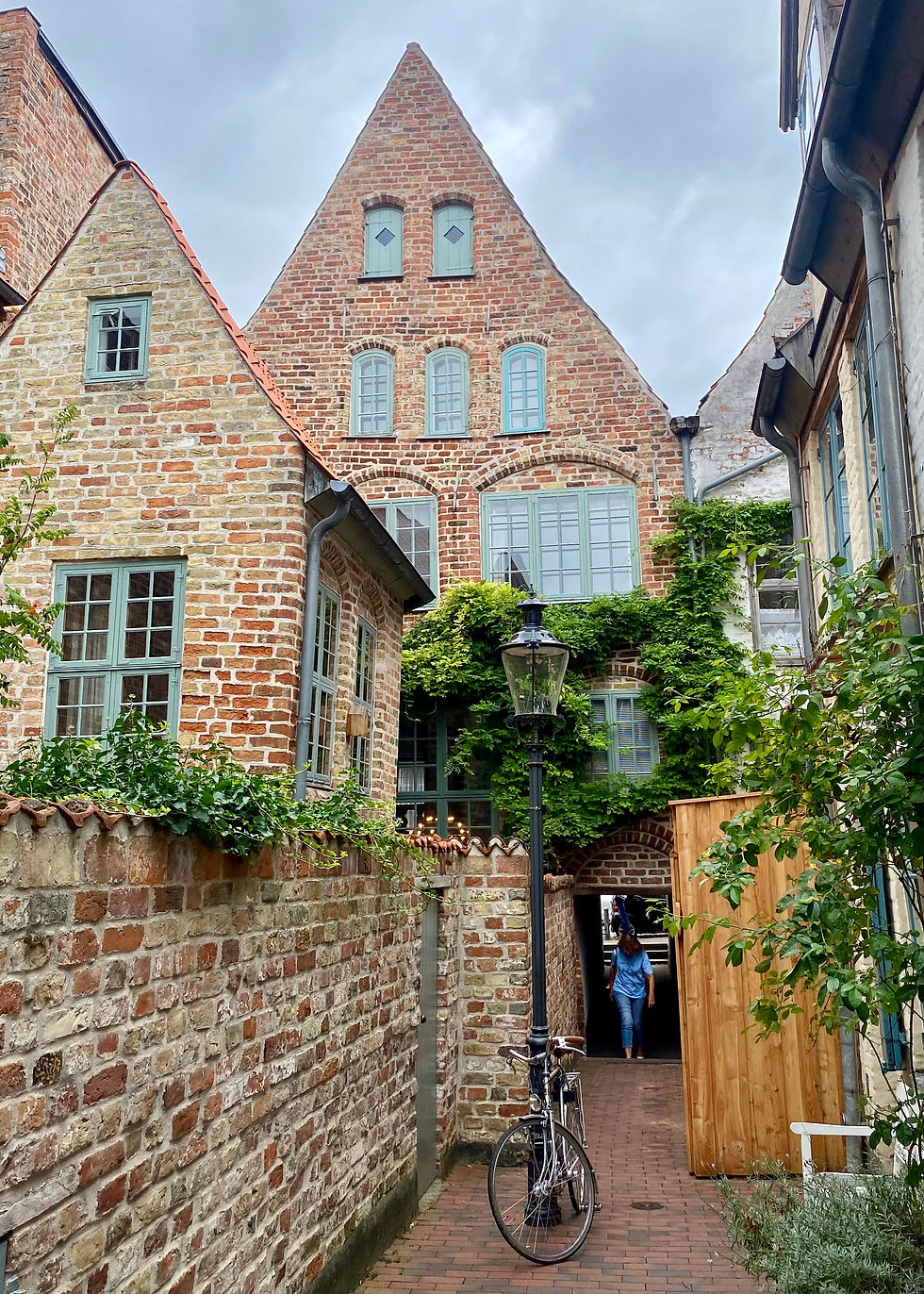
Our walking tour took us through several gangs and into pretty little courtyards and back yards.
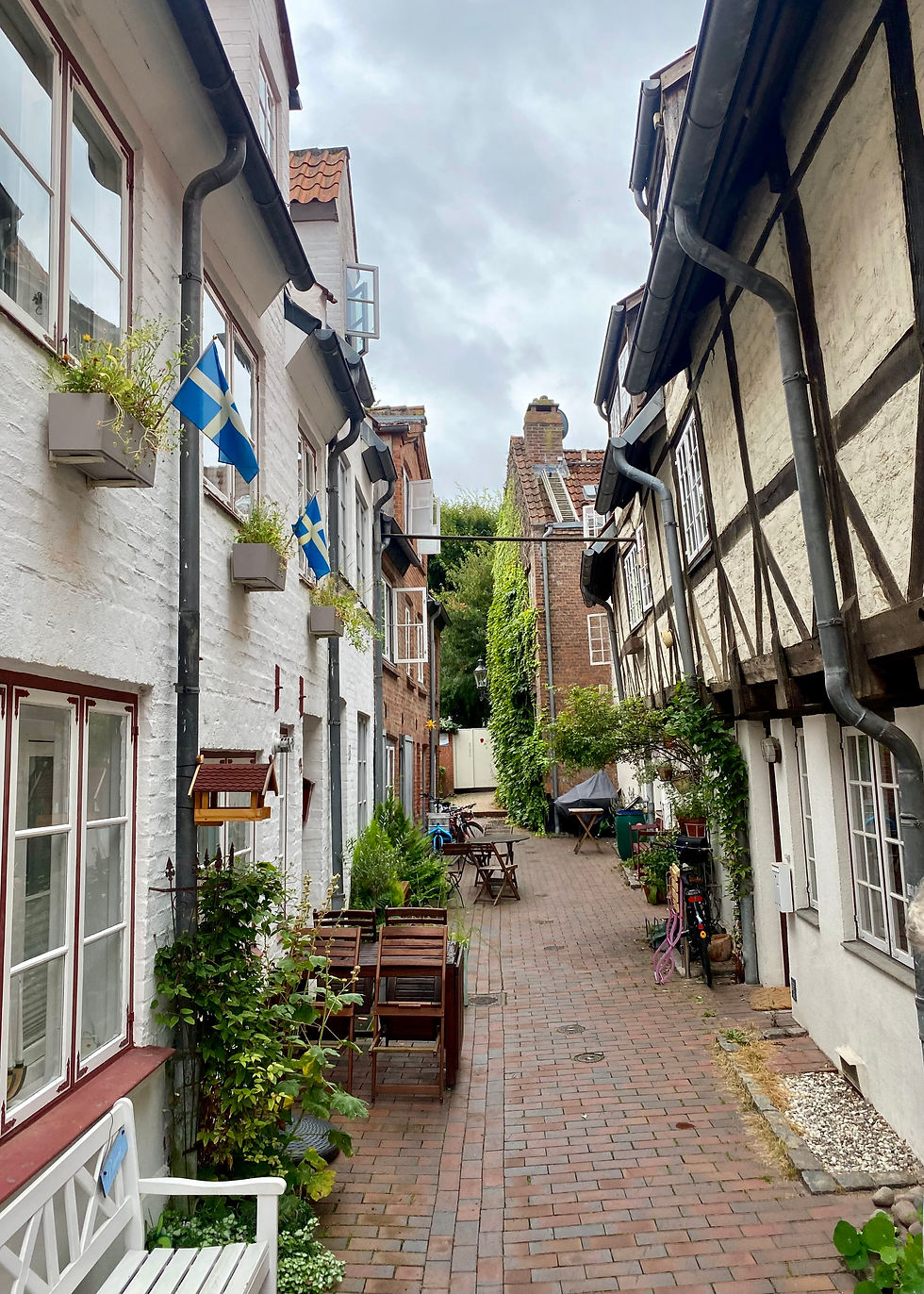
A pretty alley.
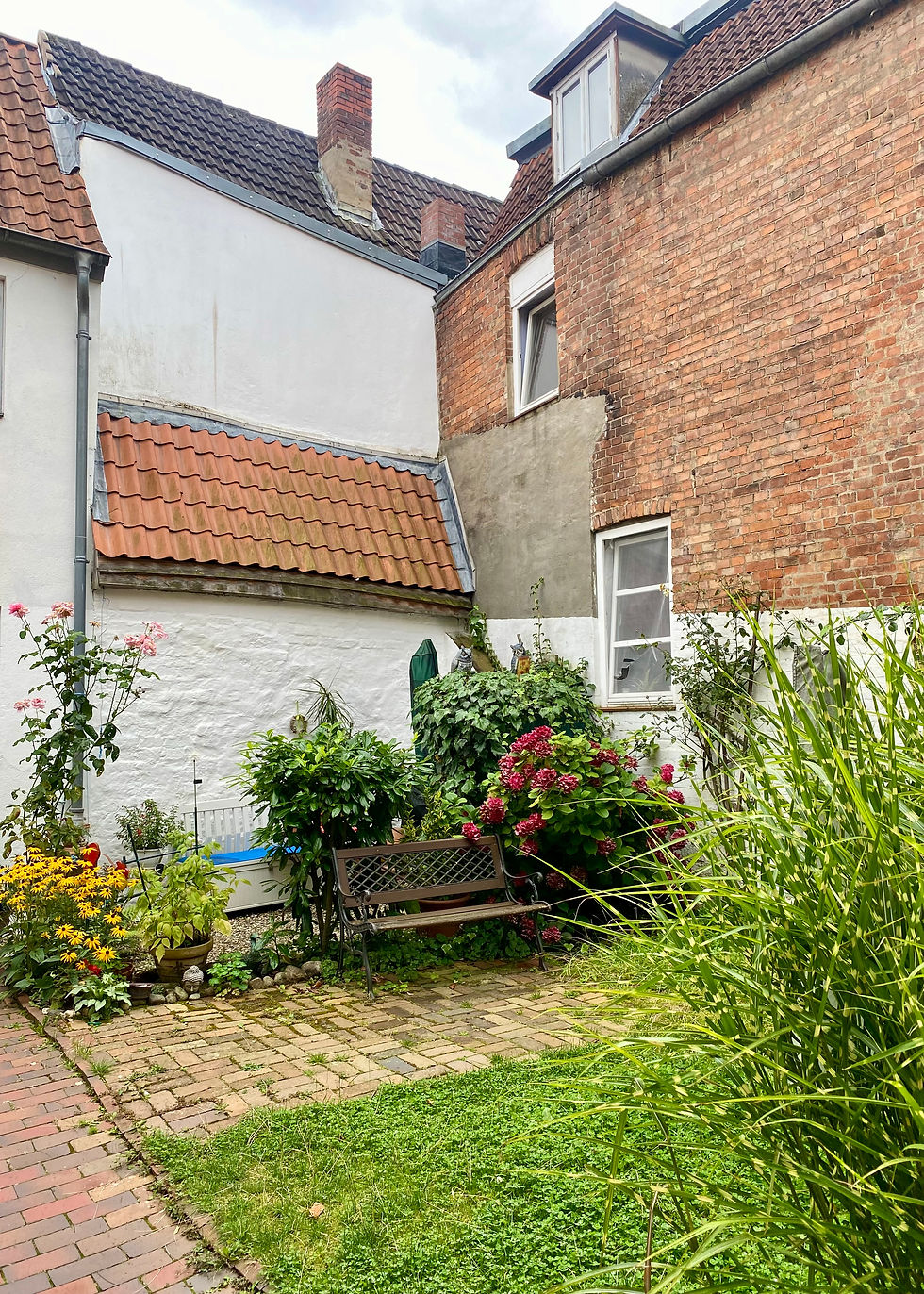
A nice back yard.
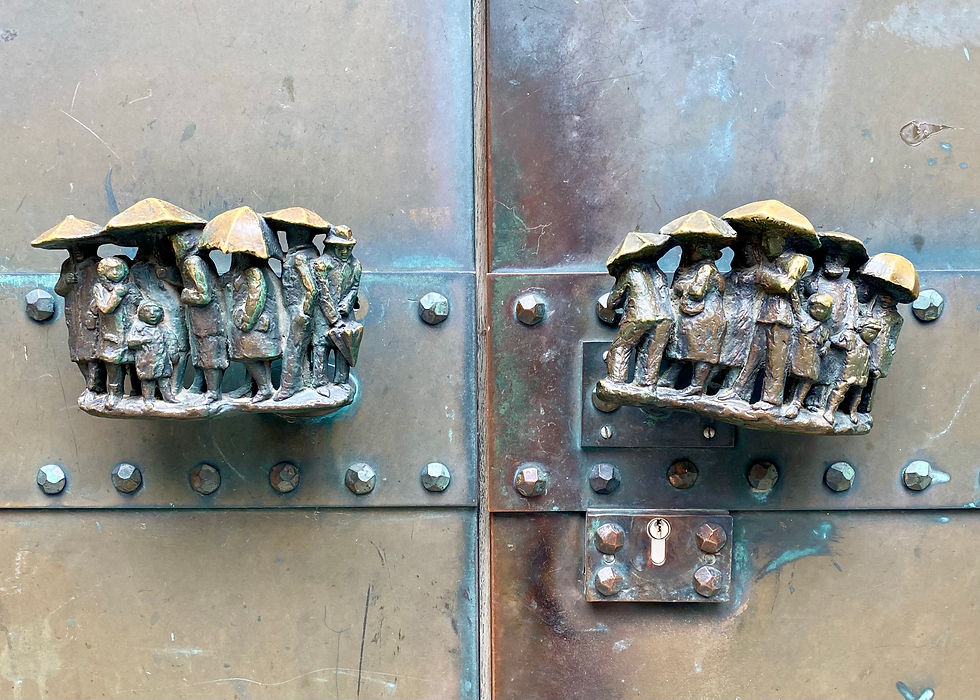
Door handles.
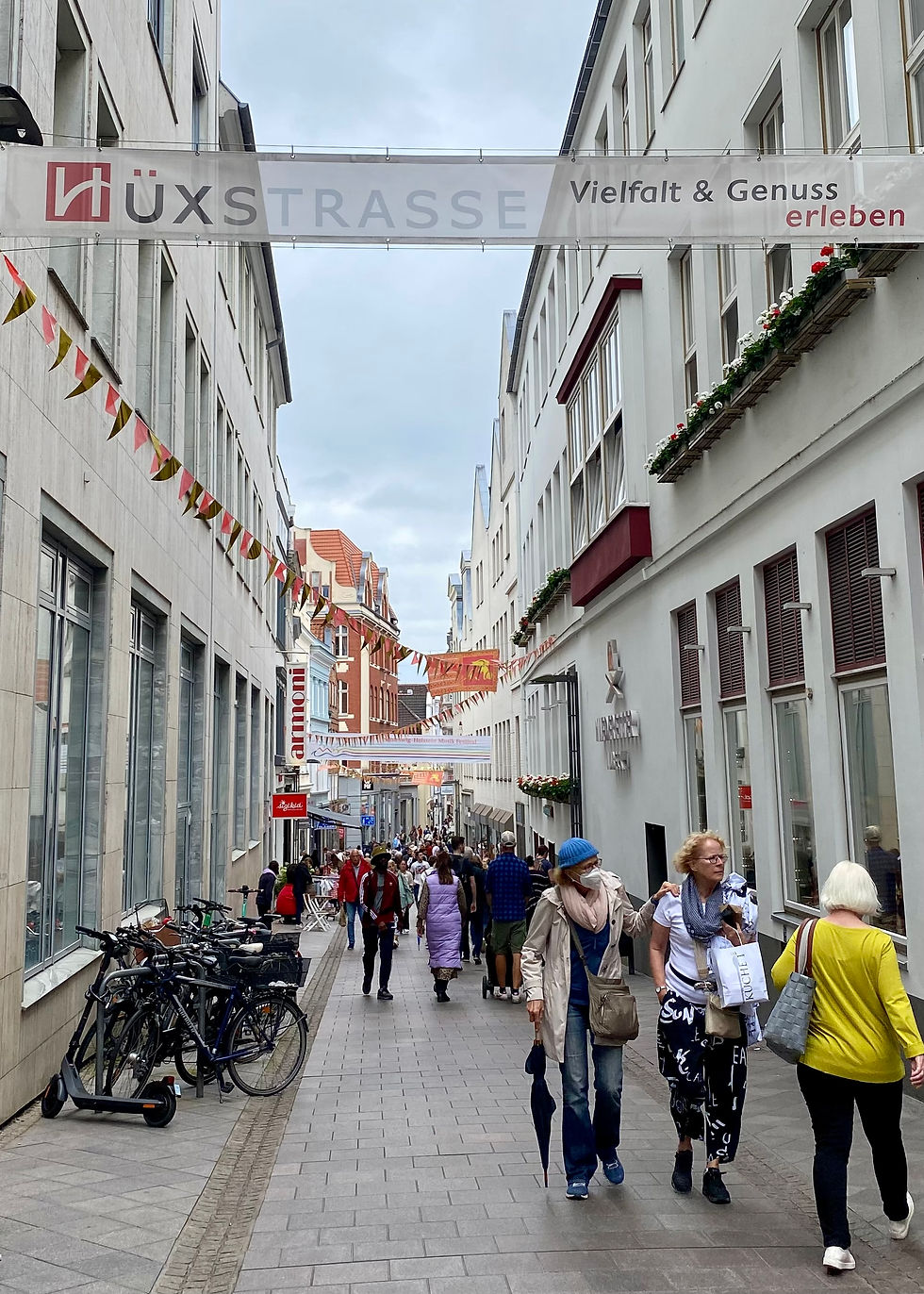
A busy side street.
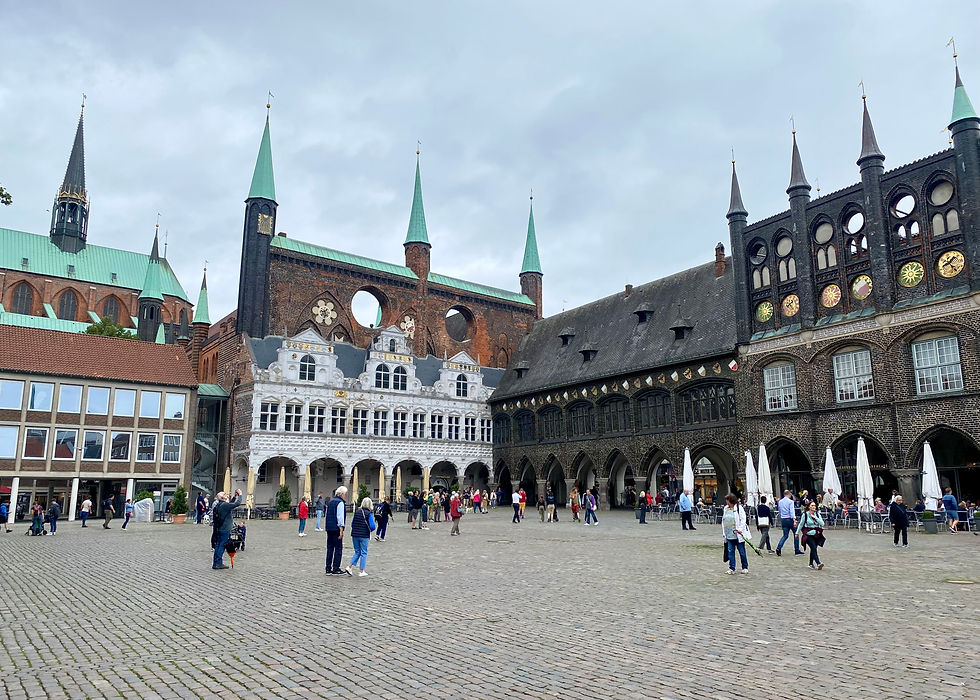
The central square of old Lübeck.
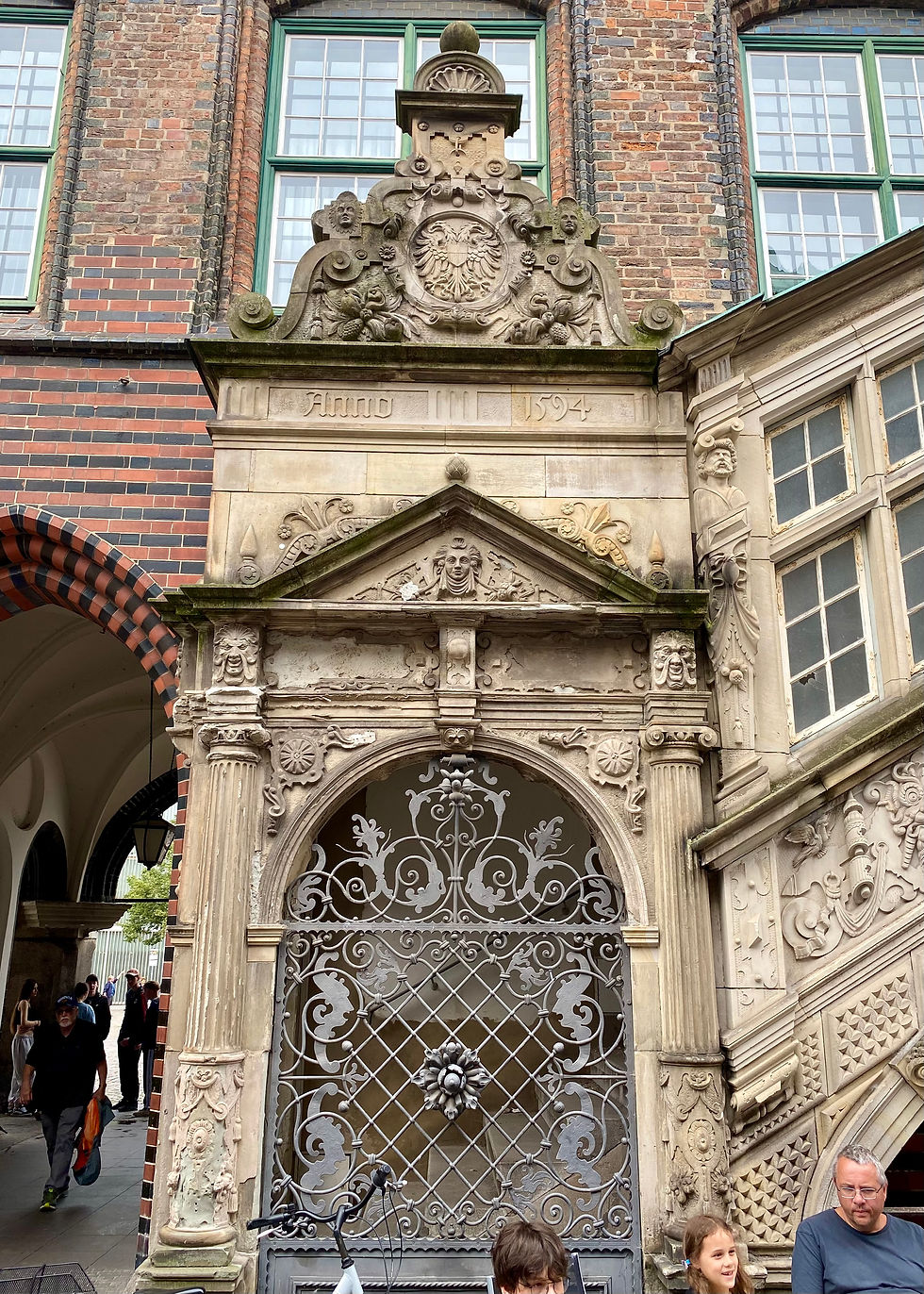
This doorway is from 1594.
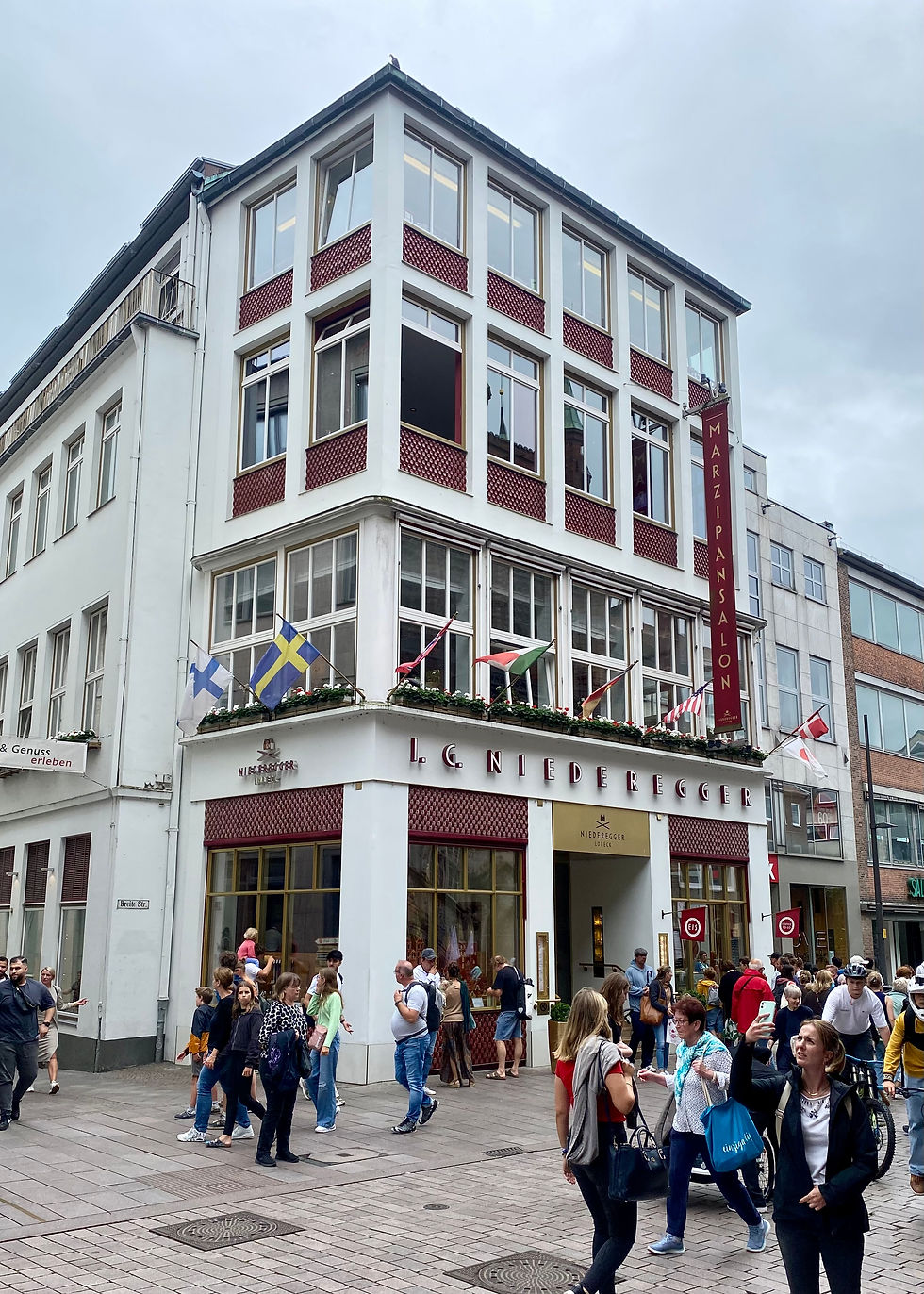
Lübeck is known for its marzipan, and this is the place to get it in the old city.

The marzipan checkout line.
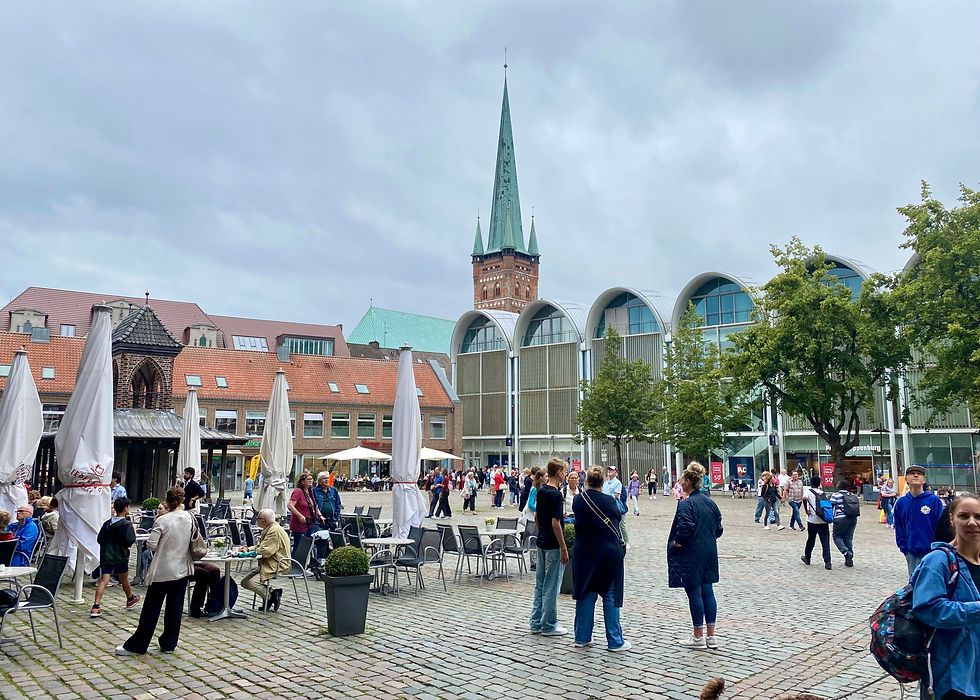
Another view of the square, with (of course) a spire in the background.
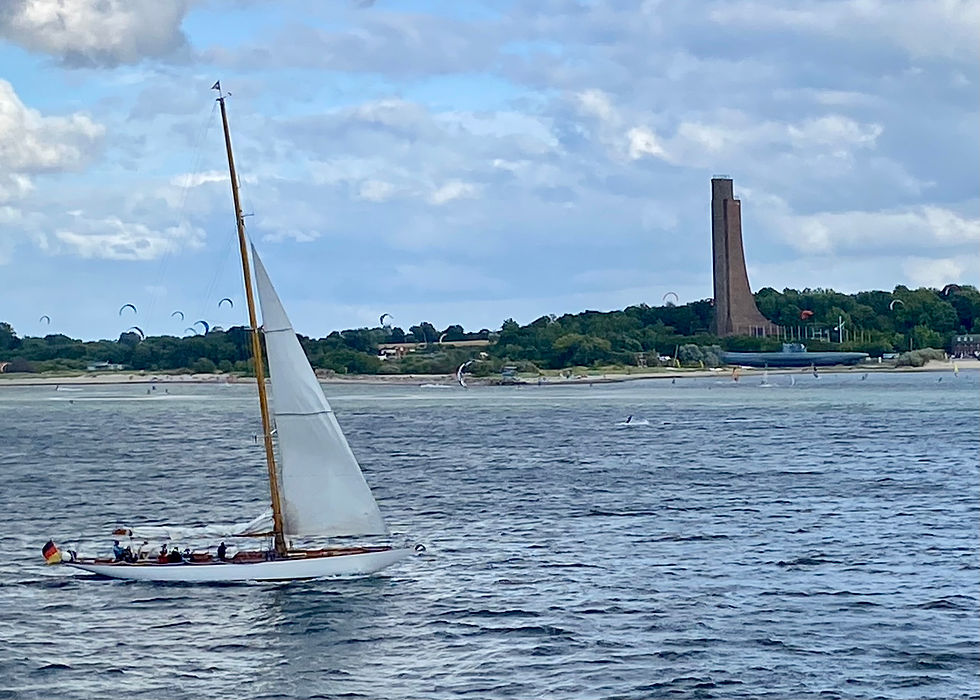
Leaving Kiel, we sailed past a German World War II U-boat, the U-995, which is now a museum. The tall structure is the Laboe Memorial, an internationally recognized peace monument.


